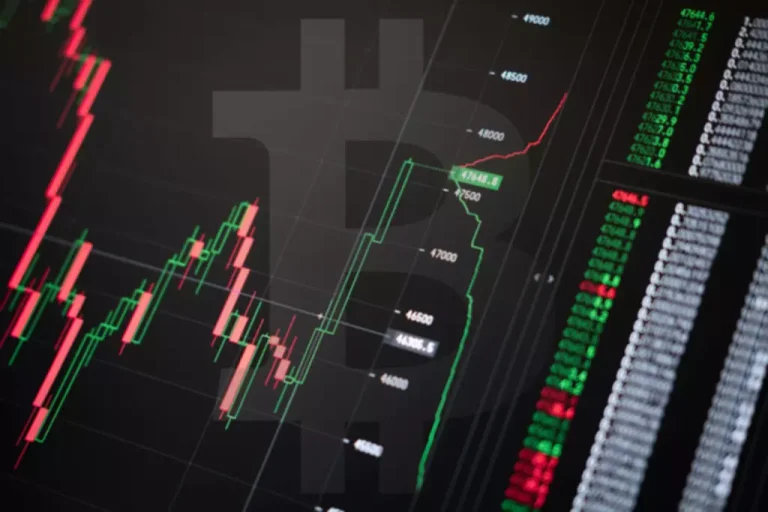However, a centralized exchange may be shut down if a CEO or keyholder dies, disappears, or loses their private keys. Worse still, customers can lose access to funds or lose funds altogether when an exchange holds custody of their belongings. As it is seen in the case of Perpetual Protocol, Balancer has not reached the restrict in AMM creating and new, hybrid models are here to come back.
Odos.xyz is a new DEX aggregator that is prepared to search more complicated options than existing platforms, allowing for atomic multi-input trades and higher charges for its customers. For example, Uniswap, a decentralized change constructed on Ethereum, stands as a main example of an AMM. It offers over 1,500 ERC-20 trading pairs and boasts greater than $3.forty five billion in user-contributed liquidity. Since its inception in 2018, Uniswap has facilitated over $1.2 trillion in commerce volume across more than 125 million trades. Secondly, Shared Pools enable anybody to supply liquidity and use the Balancer Pool Token (BPT) to trace the ownership of the pool.
What’s A Market Maker?
As in any liquidity pool, two tokens (A and B) are involved; we consider the token swaps as buying and selling pair swaps. The companies returned by the car wash are synonymous with the swapped tokens, which a specific liquidity pool of the involved AMM provides in return for the deposits. Previously on this collection, we coated what AMMs are, how they differ from traditional MMs, and their execs and cons. In this blog, we shall talk about the several sorts of AMMs and the new models that AMM protocols have developed over time.
While Automated Market Makers have revolutionized the crypto buying and selling landscape, in addition they include their own set of challenges and risks. Understanding these is crucial for anybody seeking to participate in an AMM platform. Furthermore, anybody can turn into a liquidity supplier on an AMM platform, whatever the dimension of their capital. This democratizes the trading process and opens up alternatives for a wider vary of members. Sushiswap began as a fork of Uniswap however rapidly differentiated itself with additional features. The most notable of those is yield farming, the place users can stake their SUSHI tokens to earn a portion of the platform’s buying and selling fees.
If the value on an AMM deviates from the market worth, arbitrageurs can profit from the distinction, bringing the value again in line. This model is just like the CPMM, however the multiplication within the method is replaced with addition. The liquidity always equals the entire amount of token A plus the total amount of token B. In line with the Trust Project guidelines, the academic content on this web site is offered in good faith and for general info purposes only.

Each trade that happens within a pool comes with a charge, which is then distributed to liquidity providers in accordance with their share of the pool. In DeFi, AMM refers to algorithms that routinely adjust token costs in liquidity swimming pools. When merchants place a transaction to swap crypto they submit an amount of asset A which returns a given amount of asset B. A sensible contract ensures that the total worth of the liquidity pool is identical earlier than and after each transaction. Impermanent loss occurs when the costs of two belongings in a liquidity pool change, inflicting the worth of one asset to increase while the other decreases. This occurs as merchants purchase one token in the pool whereas promoting the other.
AMM protocols are Web3 platforms that facilitate token buying and selling in a decentralized environment with out TrafFi market-makers. As our article exhibits, automatic market makers have established themselves as an integral part within the DeFi neighborhood. Various models are used and the coming years will present which protocols are the most effective. This means that the costs of A and B stay the same no matter how the quantities of the property change.
Liquidity-as-a-service Amms
Automated market makers (AMMs) are a type of decentralized exchange (DEX) protocol for buying and selling digital property utilizing algorithms as a substitute of order books. Also, AMMs facilitate permissionless token swaps without intermediaries. Instead, AMMs use smart contracts, oracles, liquidity providers (LPs), and liquidity pools. Furthermore, AMMs are actually an important a part of the decentralized finance (DeFi) ecosystem and are changing how consumers and sellers interact. These AMM exchanges are based on a continuing operate, the place the combined asset reserves of buying and selling pairs should remain unchanged. In non-custodial AMMs, person deposits for buying and selling pairs are pooled within a smart contract that any trader can use for token swap liquidity.
In real life, any arbitrageur would drain one of many property or reserves within the pool, provided that the ratio of the reference worth between the tokens is not 1. A scenario like this automated market maker may destroy the liquidity pool, leaving it with only one asset whereas fully draining out the second one, leaving no liquidity for the traders. Although typically worthwhile, utilizing automated market makers (AMMs) is inherently dangerous.

In Vitalik Buterin’s unique submit calling for automated or on-chain cash markets, he emphasized that AMMs shouldn’t be the only out there choice for decentralized trading. Instead, there needed to be many ways to trade tokens, since non-AMM exchanges had been very important to keeping AMM prices accurate. What he didn’t foresee, nevertheless, was the development of varied approaches to AMMs. Balancer is an AMM-based decentralized exchange that launched in 2020.
Yield Farming Opportunities On Amms
A market maker ensures that a particular crypto buying and selling ecosystem can be loaded with consumers and sellers. Also a market maker also can function a buyer/seller, relying available on the market scenarios and necessities. Long before AMMs and even DEXs have been around, trades across conventional markets have been facilitated by the order guide system. You can contemplate the order e-book as a diary that records the interest of buyers and sellers for a given asset. The second way of a dynamic AMM is through the use of information from oracles similar to ChainLink to calculate the implied volatility (the market’s forecast of the volatility of a particular asset). DAMMs then use this data to concentrate the liquidity close to the market price if the implied volatility is low and prolong the liquidity to an unlimited value range if the implied volatility is high.

Hybrid Constant Function Market Makers (CFMMs) combine parts of various AMM fashions to optimize for both liquidity provision and value stability, aiming to scale back issues like impermanent loss. To trade with fiat forex, customers often have to undergo a centralized trade or other on/off-ramp services to transform fiat to cryptocurrency before interacting with AMMs. The challenge with hybrid fashions is to stitch these different elements into a strong and reliable AMM cloth. An instance of such a model is Curve Finance, which mixes CPMM and CSMM models to supply a capital-efficient platform to change pegged property.
What Are Cryptocurrency Exchanges And How Do They Work?
Therefore, Perpetual Protocol eliminates impermanent loss chance for its customers. Another benefit of the mannequin is that there isn’t a real want in liquidity suppliers. Unlike conventional CPMM the place pool’s liquidity come from LP, in vAMM merchants present money to the vault and thereby fill the pool by themselves.

Liquidity providers take on the danger of impermanent loss, a possible loss that they may incur if the worth of the underlying token pair drastically changes in either path. If the loss is bigger than the acquire obtained via amassing buying and selling fees https://www.xcritical.com/, the liquidity supplier would have been better off just HODLing the tokens. When expressed on a graph, the costs of assets inside an automated market pool comply with a curve. Purchasing one x from the pool pushes the price of x above the curve, whereas the sale of x pulls the price of x under the curve.
Start Your Defi Journey
One of the primary risks for liquidity suppliers in an AMM is impermanent loss. This happens when the price of the tokens within the liquidity pool modifications in comparability with once they have been deposited. If the price of 1 token rises, the AMM’s balancing algorithm will cause extra of that token to be bought, resulting in less of the extra useful token within the pool. A liquidity pool (LP) is a collection of funds held inside a sensible contract, which depends upon algorithms. Liquidity suppliers (LPs) are customers who deposit tokens in DeFi smart contracts in order that their crypto assets can be used for trading, borrowing, or lending by other customers. Automated market makers (AMM) are sensible contracts that power all decentralized crypto exchanges (DEXs) as properly as different decentralized finance (DeFi) protocols.
What Is an Automated Market Maker (AMM)? – BeInCrypto
What Is an Automated Market Maker (AMM)?.
Posted: Tue, 25 Jul 2023 07:00:00 GMT [source]
An AMM that doesn’t truly maintain real assets but relies on a mathematical mannequin for determining the price of an asset is termed a digital AMM. These AMMs are nice for buying and selling artificial assets — ones that mimic real-world entities like gold or silver. Virtual AMMs incorporate digital balances and create a extra balanced pricing mannequin that eliminates slippage significantly. Several in style cross-chain market makers, like the Synapse Protocol, THORChain, Ren Protocol, and more, allow users to swap tokens across chains. AMMs remove the necessity for traditional market markers and order books, enabling P2P, automated trades. Order dimension and middlemen points aren’t encountered as good contracts govern the whole trading scenario.
Although impermanent loss is an inherent risk in terms of decentralized trading, this risk can be considerably limited by utilizing flexible pools or through conservative consumer behavior. Therefore, a dealer who wants to withdraw 1 WBTC should deposit 1,111.11 DAI tokens into the pool. Another means of taking a look at it is equating 1 WBTC (pool-specific) worth to 1,111.11 DAI tokens. This is how an AMM works, particularly in regard to liquidity provision and token swaps. You can consider an automatic market maker as an engine fuelling the operations of the DEX in sight. Let us understand this a bit better with a standard means of defining issues.
